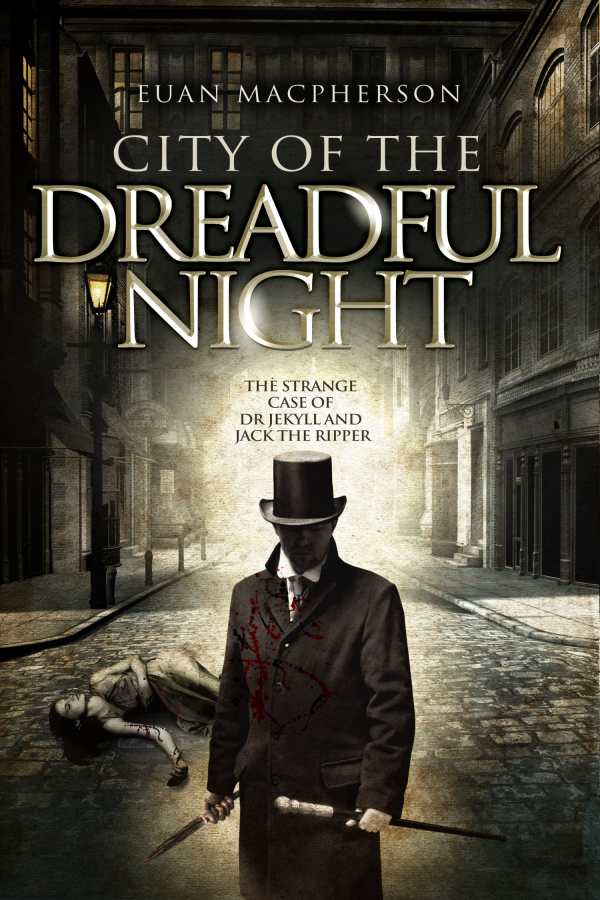City of the Dreadful Night
The Strange Case of Dr Jekyll and Jack the Ripper
City of the Dreadful Night delivers a Gothic explanation to the unsolved mystery of Jack the Ripper.
A killer stalks London’s slums in Euan MacPherson’s novel City of the Dreadful Night, a horror mashup with roots in real-life crimes.
Ramsay, a Pinkerton detective, follows a murder suspect to London, hoping to avenge Catherine, the victim he feels he failed. But when his suspect becomes a victim himself, Ramsay’s certainty wanes. With the help of a goodhearted, down-on-her-luck actress, Marie, and a diminutive detective, he connects the crimes to Jack the Ripper and begins his own investigation. He follows echoes through London’s alleys, has conversations with ne’er-do-wells in dank pubs, and visits the reclusive Dr. Jekyll on repeat. His sole distraction is the possibility of finding love with the Irish lass at his side.
Mixing historical facts with references to Robert Louis Stevenson’s Gothic classic Strange Case of Dr. Jekyll and Mr. Hyde, the book maintains real details about the murders that were attributed to Jack the Ripper, their evidence, and the official suspects in the case. It is exacting with these technicalities. But when it deviates from the record, it becomes more amorphous.
The book’s settings are established via repeating details: about the smog that overlays the city and the invisibility of the stars; regarding clocks on the wall, sawdust on the floor, wood paneling, copperplate lettering, teacups, and pinafores. The world beyond these tactile touchpoints, though, remains sheathed in mystery. Dreaminess pervades the tale, but with little to center it, the potential for horror is diluted.
While the book is heavy on atmosphere, it is light on development. Indeed, it takes considerable time for the investigation to begin. Ramsay is followed through the streets more than once and takes note of the tapping sounds behind him, but confrontations are avoided for much of the book. And once Ramsay settles on Dr. Jekyll as a suspect, his methods are questionable: he puts himself in the same dangerous situation multiple times and changes little about his approach. Suspense is sacrificed; even the fight scenes, in their familiarity, feel inert.
The book’s characterizations are light as well—in particular in relation to its women. The serial killer’s victims are reduced to the worst nights of their lives; the gruesome details of their deaths are preserved, but little is known about them beyond this. Though there are attempts to flesh out Marie, she is also underdeveloped in the end—a mere tragic figure whose blonde hair, blue eyes, nipples, and poverty are remarked upon, but whose humanity is flattened in the process. Her affair with Ramsay is swift and unconvincing; they spend more time in bed than conversing. Though she receives more page time than the other women, the attention upon her is just as voyeuristic and limiting. Still, even Ramsay’s development is loose: he’s known in terms of his work and desires; others most often comment either on his pectoral muscles or his “Wild West” attitude.
The novel is undermined by its anachronisms, racial slurs, a gratuitous rape scene, a hazy timeline, and shoehorned-in social commentary. A profusion of adverbs, instances of missing punctuation, and unnecessary capitalization further plague the book. As the story pushes toward its final showdown, excitement dissipates. A killer may be stopped, but satisfaction remains at large.
The horror novel City of the Dreadful Night revisits historical crimes with an inventive twist.
Reviewed by
Michelle Anne Schingler
Disclosure: This article is not an endorsement, but a review. The publisher of this book provided free copies of the book and paid a small fee to have their book reviewed by a professional reviewer. Foreword Reviews and Clarion Reviews make no guarantee that the publisher will receive a positive review. Foreword Magazine, Inc. is disclosing this in accordance with the Federal Trade Commission’s 16 CFR, Part 255.

